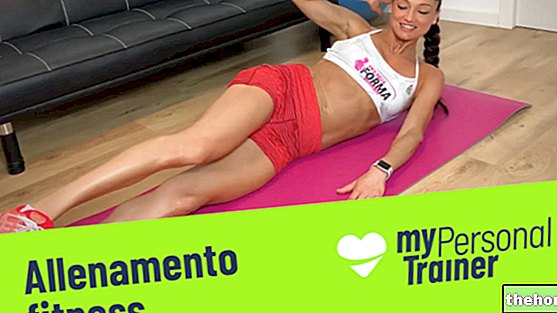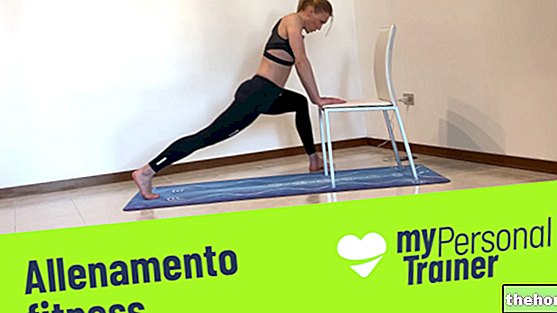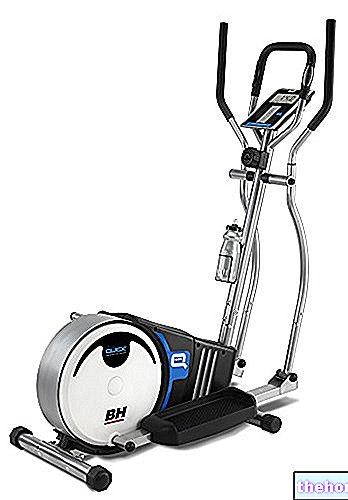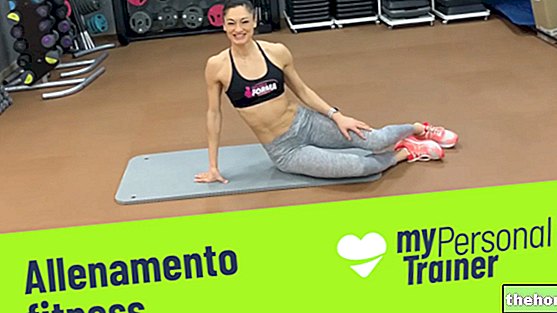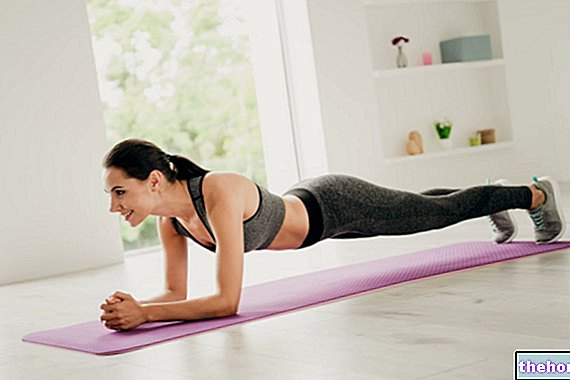Watch the video
- Watch the video on youtube
curated by Selena Mercandelli and Elena Vitale
and feet on the ground. It helps us to enhance the extension of the vertebral column forward and the elongation of all the posterior muscle chains.
In addition to the benefits of Prasarita (see below), it combines the power of twists, very important movements for the human body for their great detoxifying and purifying power. Parivritta Prasarita Padottanasana is a "complete asana because it offers the benefits of forward bends, inversions, the strength of standing asanas, the therapeutic power of twists.
The meaning
The term prasarita in Sanskrit it means "elongated", pada "feet", ut "intense" e tan "to tend". The term "parivritta" means "inverted". The name of this asana therefore indicates an intense stretching performed by the legs that brings the torso to bend forward at the table in its maximum expansion with the arms extended and the hands resting on the ground and with a torsion of the torso upwards by lifting one arm and then the other.
When you practice
It is typically inserted between standing postures after sun salutations. During the execution of Prasarita Padottanasana, the asana is proposed to the practitioner as a variant to increase its intensity and enhance its beneficial effects.
Sequence and repetitions
Stand on the long side of the mat with your feet about three feet wide. Bring your hands to your hips, inhale, and exhaling open your arms sideways. Then inhale and exhale, extend your arms forward and, stretching as far as possible, place your palms on the ground, keeping your wrists in line with your shoulders.
Leave your right palm on the ground and extend your left arm upwards, bringing your gaze to your left hand. Stay for five breaths. Each time you inhale, you increase the extension upwards and as you exhale, you increase the twist. Then bring your palm back. left down, place it on the ground and with an inhale raise your right arm upwards, look up, feel the opening of the side and remain on this side for five breaths, stretching yourself more and more with each inhale and opening your side more and more in torsion with each exhale.Then slowly bring your arm down and rest your palm on the ground.Rest your hands on your hips, pressing hard on your feet and activating your legs.
Because it is good
This asana produces immediate benefits on the whole body and in particular on our internal organs. The torsion of the torso performs a deep massage of the internal organs, favoring a blood exchange, detoxifying and purifying the body. The pressure on the navel area acts on the organs responsible for digestion facilitating it. It allows a greater elongation of the spine as it is strengthened by the torsion.
, stomach and pelvic organs.The meaning
The term prasarita in Sanskrit it means "elongated", pada "feet", ut "intense" e tan "to tend". The name of this asana therefore immediately evokes an intense stretching performed by the legs that leads the torso to bend forward in its maximum expansion.
When you practice
Prasarita Padottanasana is a complete asana because it offers many benefits to those who practice it: it combines the positive effects of forward bending with those of inversion and the strength of standing asanas.
It is usually inserted in the first part of a yoga sequence after the sun salutation, between standing positions.
Sequence and repetitions
Stand on the long side of the mat and spread your feet parallel to each other about a meter wide, turning your toes inwards. The legs open according to your flexibility and height. Try not to strain and always start progressively. .
Bring your hands to your hips, inhale and stretch your back letting your shoulders and shoulder blades slide down. Then inhale, and exhaling flex the torso forward starting the movement from the hips and bringing the hands to the ground at the height of the feet. Try to keep your back straight, without forcing it. Keep the legs straight and the soles of the feet well rooted to the ground. No matter how far you go down to the ground with the torso, the important thing is to keep your legs still and the spine straight, in this way you can reduce the effort and avoid any pain in the lumbar area. If you can, bend your elbows more and more and go down until the top of the head touches the ground, resting it in your hands if you can. Whatever your final position, inhale and breathe deeply at least five times while maintaining the right balance between effort and ease.
Then pressing on the soles of your feet activates your abs and quadriceps, inhale, lift your torso slightly and grab your big toes with your index and middle fingers and thumb. Bend your elbows out and bend forward again trying to bring the top of your head to the ground. Use your arms to pull and stretch your back. If you are very flexible you can grab the outside of your heels. . Stay here for another five breaths. Then, inhaling, release your hands and bring them behind your back with your fingers intertwined. Slightly arch your back while inhaling, and exhaling re-extend the spine towards the ground bringing your arms over your head until you try to bring your hands to the ground as well. Remain for five breaths, then inhaling untie the intertwining, bring your palms back to the ground, extend your arms, and exhaling bring your hands back to your hips, rise with your torso upwards and bring your hands in prayer in front of your chest.
Because it is good
This asana is a real cure-all for the body and for the health of our internal organs.
Stretches the spine, muscles and hamstrings of the back and legs. Fortify your shoulders and upper back. Relax your neck muscles. It stretches the inner thigh muscles and helps open the hips. Massage the abdomen, facilitating digestion and any intestinal or menstrual pain.
Being a combination of a slight inversion (the head and heart are below the hips) and a forward bend, this asana brings calm and tranquility.
Some advice for beginners
Adjust the position of your feet well: remember to turn your toes inwards, the more your feet are open to each other, the easier it will be to bend forward and reach the ground, but if they are too far away you could lose your balance and feel excessive pain in your hamstrings. .
Watch out for your knees! If you are starting out, flex your knees slightly to avoid hyperextension, then straighten them slowly. If your knees naturally tend to hyperextend, perform this position with your knees slightly bent.
If at first you can't touch the ground with your hands you can use two blocks. Exit slowly from the position. If you happen to feel dizzy or suffer from low blood pressure, bring your hands back to the ground in the table and stay a few moments in this intermediate position Return very slowly to an upright position.
We just have to get all on the mat!

